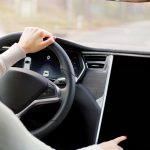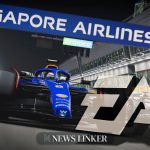Elon Musk publicized his frustration over major automakers’ reluctance to adopt Tesla’s Full Self-Driving (FSD) suite, adding another layer to the already competitive self-driving technology landscape. As the automotive industry faces mounting pressure to advance autonomous driving features, Tesla remains at the forefront with its FSD system. Musk has highlighted missed opportunities for collaboration, suggesting that traditional manufacturers are hesitant or unwilling to integrate Tesla’s technology, even when it is offered on flexible terms. These statements add to growing questions about how legacy automakers plan to stay competitive in a market rapidly shifting toward vehicle autonomy. Consumer interest in self-driving features continues to grow, and hesitation from established brands could have lasting implications on their future.
Recent reports from earlier years indicated occasional discussions between Tesla and established brands such as Ford, although no significant partnerships were confirmed. While companies like Ford and GM have experimented with autonomous projects, none have matched the scale or public confidence seen in Tesla’s developments. Efforts by competitors have often slowed due to technological hurdles or concerns over regulatory approval. Even as interest in FSD remains high, previous announcements show little progress toward formal licensing agreements between Tesla and its traditional rivals.
What Did Musk Say About Licensing Tesla FSD?
Tesla CEO Elon Musk commented on social media that his overtures to license Full Self-Driving to established automakers were either met with disinterest or encumbered by what he deemed “unworkable requirements.” Musk emphasized that legacy companies propose limited pilot programs, projected years into the future, coupled with stipulations that he finds impractical for adoption.
“I’ve tried to warn them and even offered to license Tesla FSD, but they don’t want it! Crazy,”
he said.
Discussions, according to Musk, are sporadic and unproductive, rarely materializing into viable collaborations.
“When legacy auto does occasionally reach out, they tepidly discuss implementing FSD for a tiny program in 5 years with unworkable requirements for Tesla, so pointless.”
These remarks point to a standoff between Tesla and other automakers regarding access to leading-edge driver assistance technologies.
How Are Legacy Automakers Approaching Autonomous Driving?
Traditional carmakers have taken cautious steps in self-driving technology, often focusing on internal research or limited partnerships. Ford, General Motors, and Stellantis have invested in their own autonomous initiatives but remain behind Tesla in commercial deployment. Companies often cite regulatory complexities, safety standards, and profitability concerns as barriers to rapid integration. The reduction in Ford’s electric vehicle output and scaling back of EV programs further illustrate the difficulties legacy brands face as they balance innovation with financial viability.
Could Tesla’s Head Start Widen the Industry Gap?
Tesla’s progress in autonomous driving, bolstered by extensive real-world data and significant investment, contrasts with more modest efforts from the industry’s incumbents. Analyst Rob Wertheimer predicted substantial value creation for Tesla stemming from its advancement in FSD. While Musk views the reluctance of established players to adopt Tesla’s technology as potentially detrimental to their future prospects, some experts suggest automakers risk losing pace to new market entrants and tech-forward rivals, such as XPeng and BYD, that are also pressing ahead.
While the self-driving car sector remains competitive, Tesla’s strategy of offering to license its FSD technology to rivals stands out, especially when compared to peers who mostly keep development in-house. This approach could potentially accelerate widespread adoption but is limited if automakers set terms that complicate or delay integration. For consumers, these industry dynamics may influence the timing and availability of advanced driver assistance features in mainstream vehicles. Given regulatory uncertainties, evolving standards, and the rapid pace of software innovation, automakers face difficult decisions balancing proprietary development with partnerships. As the market matures, the stance of legacy players regarding collaborations or licensing agreements may become a decisive factor in their long-term standing among autonomous driving leaders. For those interested in the future of vehicle autonomy, monitoring how manufacturers respond to licensing opportunities like Tesla’s will inform which brands make the leap first. Awareness of these negotiations is useful for consumers considering technology features in future vehicle purchases.









